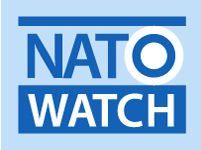Source: Global Security Newswire, 11 December 2012
Within two decades, lowered barriers for access to biological warfare agents, precision-strike weapons and other lethal technologies will give nonstate actors new abilities to carry out massive destabilizing attacks, according to the conclusions of a new report from the US National Intelligence Council.
The council, which performs long-term strategic analysis for the National Intelligence Director’s Office, forecasts terrorism will continue to remain an issue in 2030, though the threat presently posed by radical Islamist organizations might have drastically eroded by then.
“Many states might continue to use terrorist groups out of a strong sense of insecurity, although the costs to a regime of directly supporting terrorists looks set to become even greater as international cooperation increases,” according to the report released on Monday, “Global Trends 2030: Alternative Worlds.”
The report foresees a greater likelihood of terrorist organizations carrying out digital strikes or WMD attacks.
The rapidly developing field of synthetic biology, while offering many positives to human society in medical, energy, and agriculture advances, has the “potential to be a double-edged sword and become a source of lethal weaponry accessible to do-it yourself biologists or biohackers,” the report says.
Decreasing costs encourage the spread of gene sequencing and synthesis technology. At the same time, the open-access repository of DNA sequences provided by researchers, while offering benefits in the easy sharing of information, also presents a possible danger should bad actors decide to use the genetic building blocks to create biological weapons.
This risk will only grow “as technology becomes more accessible on a global basis and, as a result, makes it harder to track, regulate or mitigate,” the report states. “To date, policy initiatives have focused on introducing reporting requirements on suppliers of [synthetic sequencing] goods, but such efforts could become futile as research becomes more diffuse.”
The intelligence estimate notes that the commercial availability of navigation technology such as GPS is speeding up the spread of precision-strike weapons to both countries and nonstate organizations. By 2030, such offensive capabilities are anticipated to be pervasive.
“The proliferation of long-range precision weapons and antiship missile systems would pose significant challenges to US or NATO to forward deployed forces, limiting in theater options or military action,” the report concludes. “More accurate weapons could lead attackers to become over confident in their military capabilities and therefore more apt to employ such systems.”
“The future of nuclear proliferation hinges on the outcome of North Korean and Iranian efforts to develop nuclear weapons. Iran’s success, especially, could trigger an arms race in the Middle East, undermining the nonproliferation regime,” the report concludes. “On the other hand, if the international community prevails in its efforts to stop both of them, multilateral cooperation would be bolstered and the [Nuclear] Nonproliferation Treaty strengthened. Similarly, use of nuclear weapons by state or nonstate actors could either encourage or discourage proliferation depending on how events unfolded.”
When US officials shared the draft NIC findings with Russian experts, they received feedback that the spread of nuclear weapons and technology would likely continue. A number of Russian analysts were also skeptical that today’s bilateral and multilateral nuclear deterrence relationships could be stably maintained over the long-term.
Independent actors with an expertise in offensive cyber operations could sell their skills on the black market, according to the report. Extremist groups that pursue cyber attacks in the future would be seeking to cause serious financial damage unlike the high body counts that are typically pursued in conventional terrorist strikes today, the authors determined.
The report predicts that by 2030, the United States will have ceased to be a “hegemonic power” but that no other nation will rise to take its place. Rather the United States will be “first among equals.” Analysts predicted an ascendant Asia will take up an increasing share of the world economy.
The National Intelligence Council releases a new Global Trends report each presidential election year in order to aid the incoming administration in its long-term national security assessments. In formulating the latest intelligence estimate, the council met with numerous US officials, private companies and independent private experts. Feedback was also sought from analysts in 20 nations.
